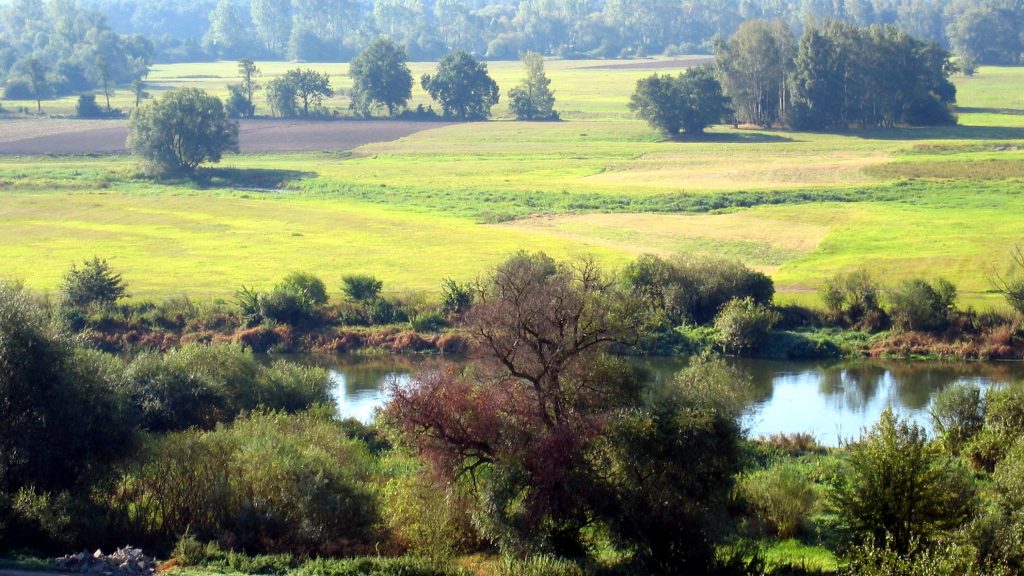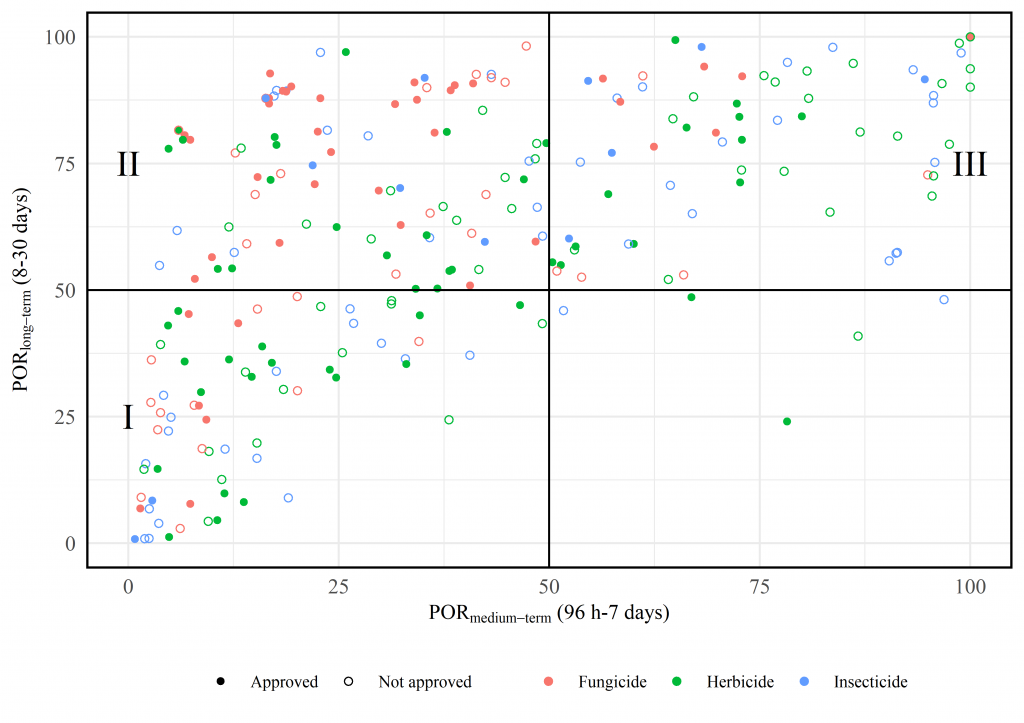In this blogpost, Larissa Herrmann talks about her latest research on pesticide reoccurrence in European surface waters, revealing that over 76% of compounds reoccur in aquatic ecosystems, with 40% previously unknown for long-term pollution. Her study, conservative in scope, highlights the need to reassess environmental risks, emphasizing the importance of understanding the long-term occurrence of pesticide impacts on water ecosystems.
“Hello, fellow eco-aficionados! Today, we dive into a topic that plays a pivotal role in the health of our water ecosystems—pesticides and their fate. We all know these chemicals are used to protect crops, ensuring the world’s dinner plates are full. But what about the journey these pesticides take once they leave the farm fields?

We are going to discover just how frequently and abundantly these pesticides are, in fact, appearing in surface waters across Europe and learn why assessing the frequency of pesticides appearing in aquatic ecosystems is pivotal in assessing their risks to the environment.
Our research (Herrmann et al., 2023) delves into the reoccurrence of pesticides in surface waters over both medium (4‒7 days) and longer (8‒30 days) durations. Using extensive pesticide monitoring data gathered across Europe, we analyzed information from 17,000 sites, comprising 15 million measurements of 474 distinct pesticide compounds. Our focus was to assess the reoccurrence of pesticides within the same geographical area within the 4‒30 day timeframe.
Our observations revealed the reoccurrence of pesticides involving > 76%of pesticide compounds, ~ 40% of which were previously not known to pollute aquatic ecosystems on a long-term basis. To quantify this observation, we computed the Probability of Reoccurrence (POR), a measure for a pesticide’s probability to reappear within the mentioned time-spans. Pesticides with a high POR are more likely to reoccur than pesticides with a smaller POR. PORs were computed for ~ 360 pesticides based on reoccurrence of these substances at 14‒18% of the monitoring sites in Europe, that were considered in the analysis. Our study can be considered conservative, since only sites narrowly monitored are contributing to the pesticide recurrence uncovered by our research, while in reality this phenomenon might possibly impact more locations and substances.

Three distinct patterns were observable when comparing pesticide PORs across medium and longer durations: ephemeral occurrence (pesticides appearing in peak exposure events, category I), intermittent occurrence (pesticides repeatedly occurring over longer timespans, category II), and permanent occurrence (category III). Fungicides predominantly characterized intermittently occurring substances, while neonicotinoids and legacy pesticides were predominant among permanently occurring substances.

Looking into pesticide exposure using public monitoring databases gives us an understanding as to how pesticides occur (repeatedly) in aquatic ecosystems in Europe. We found that some pesticides occur for longer times, like neonicotinoids, while fungicides fall into the category of intermittently occurring substances, which appear repeatedly over extended periods. Surprisingly, we discovered several pesticides, not known for polluting surface waters for longer periods, actually occurring regularly (intermittently or permanently) at 17% of European sites. To fully grasp how pesticides impact water systems, we need to keep analyzing exposure data and investigating how factors like location, application and substance properties play a role in how pesticides behave in the environment. Our study supports the idea of updating and rethinking how we assess environmental risks from pesticides, as recommended also in other peer-reviewed research.”
The paper was published by Larissa Z. Herrmann, Sascha Bub, Jakob Wolfram, Sebastian Stehle, Lara L. Petschick, and Ralf Schulz in Environmental Sciences Europe. Figures are reprinted with permission from Springer Nature 2023 (CC 4.0 International License).
